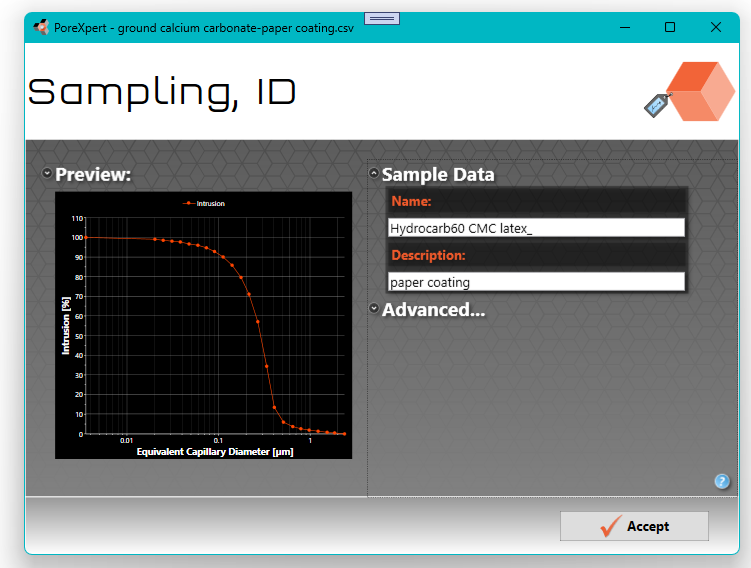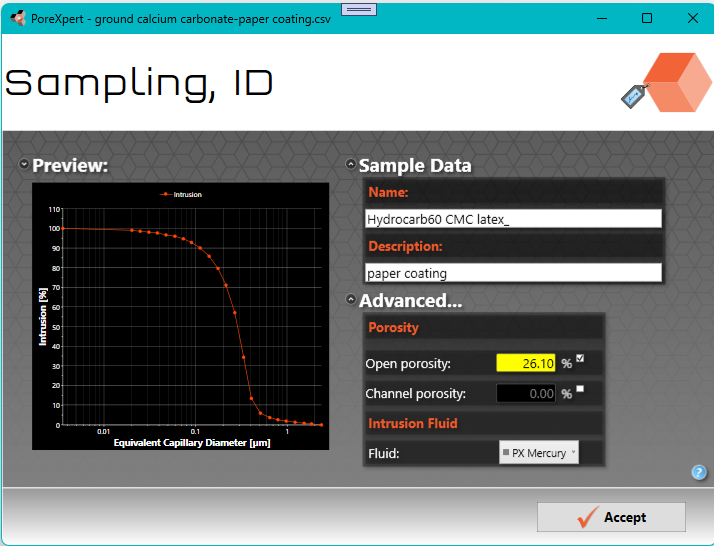The PoreXpert Sampling page will be displayed if you successfully open an experimental data file. The datafile below is supplied with the software in a directory it creates called PoreXpert, in subdirectory Example Files | Experimental Data | Porosimetry, filename ground calcium carbonate-paper coating.csv . By default, the porosity is read automatically from the datafile. If the porosity cannot be read, it will display an error message, or ask you for it.

PoreXpert sampling screen with a PoreXpert porosimetry data file currently loaded. Provided the file format is recognised, the software automatically populates the name and description fields and porosity from the experimental data file.
To check the porosity, in this case 26.10%, click on the small down arrow next to Advanced :

The Open porosity of 26.10% is that which can be measured using helium pycnometry - but beware, because helium invades pores much smaller than those accessible by mercury, so samples with a relatively high number of nanopores may give an inappropriately high porosity relative to the mercury porosimetry that you may be about to model.
Also shown on the screen is an option to enter the Channel porosity. This is the porosity visible from an electron micrograph of the surface approximated as channels running through the sample from each visible pore-throat. It will always be less than the open porosity, because if pores within the matrix of the porous material are larger than the throats connecting them to the surface, some or most of their volume will be concealed in a micrograph of the surface. If you wish to use this option, go to the Channel porosity page for further instructions.
After the porosity has been entered into the sampling screen the software proceeds to the “Fitting Screen” which controls the simplex.
The porosity value used for the simplex calculation can be the porosity determined using pycnometry or the porosity provided by the instrument manufacturer at the end of the analysis. We recommend that if the mercury is still intruding at the maximum pressure after being corrected for compression using the PoreXpert compression correction or the manufacturers' built-in compressibility correction that you measure the porosity using Pycnometry and use this value for porosity. Data files from Thermo Fisher PASCAL porosimeters, PoreXpert Porosimetry and Water Retention file formats data files will fill in the porosity automatically. If the value from porosimetry is incorrect please change the porosity to the appropriate value.